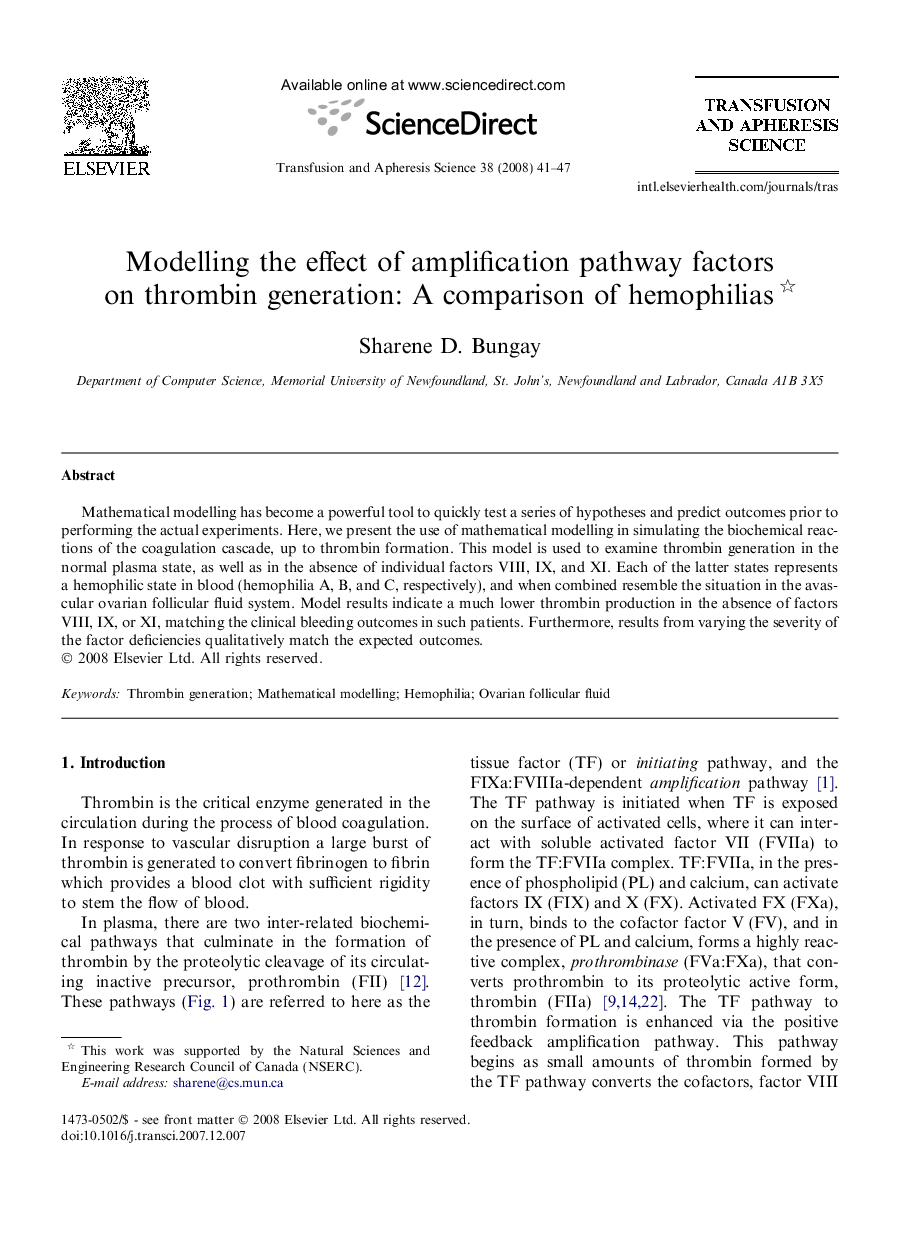| Article ID | Journal | Published Year | Pages | File Type |
|---|---|---|---|---|
| 3336064 | Transfusion and Apheresis Science | 2008 | 7 Pages |
Mathematical modelling has become a powerful tool to quickly test a series of hypotheses and predict outcomes prior to performing the actual experiments. Here, we present the use of mathematical modelling in simulating the biochemical reactions of the coagulation cascade, up to thrombin formation. This model is used to examine thrombin generation in the normal plasma state, as well as in the absence of individual factors VIII, IX, and XI. Each of the latter states represents a hemophilic state in blood (hemophilia A, B, and C, respectively), and when combined resemble the situation in the avascular ovarian follicular fluid system. Model results indicate a much lower thrombin production in the absence of factors VIII, IX, or XI, matching the clinical bleeding outcomes in such patients. Furthermore, results from varying the severity of the factor deficiencies qualitatively match the expected outcomes.
